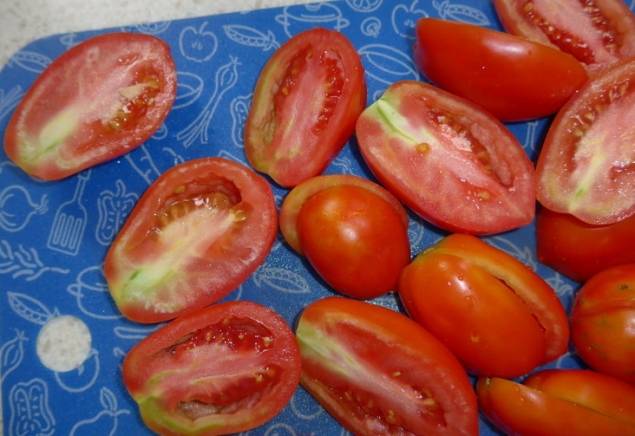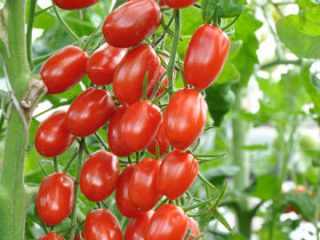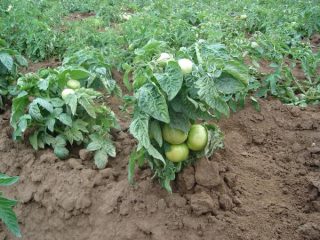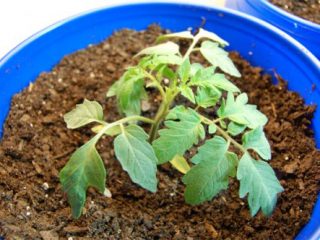Content
“Shuttle” tomatoes can be an excellent option for beginners, lazy or particularly busy gardeners who do not have time to care for their plantings. This variety is distinguished by its unpretentiousness and excellent endurance; it is not afraid of weather disasters. Even with the most meager care, “Shuttle” can produce a good harvest of tomatoes. A detailed description of this unique variety can be found further in our article. Perhaps, having familiarized themselves with the proposed photos and characteristics, novice farmers and landowners who want to try something new will make the right choice for their garden.
Detailed description
The Chelnok variety was obtained by Russian breeders and zoned for the southern and central regions of the country. It is intended for open ground, but if necessary, it can successfully grow and bear fruit in a greenhouse or under a film cover. Some experimental gardeners grow “Shuttle” indoors, placing large pots on a windowsill or glassed-in balcony.
Bushes of the “Chelnok” variety are determinate, standard type. Their height does not exceed 50-60 cm. Such low-growing plants have a reliable, stable stem.Small amounts of shoots and leaves form on it, which must be periodically removed as they grow. In general, the standard bush does not require intensive formation, since it independently regulates its growth. Such self-regulation allows saving the farmer’s time and is one of the advantages of the Chelnok variety.
“Shuttle” tomatoes form fruiting clusters above the 6th leaf. On each of them 6-10 simple flowers are formed at once. If you want to get larger fruits, pinch the clusters, leaving only 4-5 ovaries. They are especially good at filling up with nutrients and juice, resulting in large-fruited tomatoes. If you do not pinch the fruiting clusters, you can end up with a large number of medium-sized tomatoes. An example of such fruits can be seen in the photo above.
All about “Shuttle” tomatoes
"Shuttle" tomatoes have a cylindrical shape. A small pointed “nose” may form at their tip. The color of tomatoes at the ripe stage is bright red. The skin of vegetables is dense and resistant to cracking. When eating vegetables, tasters note some coarseness. You can evaluate the external characteristics and description of tomatoes of the “Shuttle” variety by looking at the photos offered in the article.
The average weight of tomatoes of the “Chelnok” variety is 60-80 g. If desired, by removing a certain number of ovaries, you can obtain tomatoes weighing up to 150 g. It is worth noting that this weight is a record for ultra-early ripening tomatoes, which include the “Chelnok” variety.
Experts assess the taste qualities of the Chelnok variety as high. Tomatoes have dense pulp with 2-3 seed chambers. The pulp harmoniously combines light sourness and high sugar content.The aroma of vegetables is not too pronounced. Tomatoes can be used for preparing fresh snacks, culinary dishes and canning. Tomatoes produce thick juice and paste. After processing and canning, vegetables retain their sweetness and unique taste.
Productivity and fruit ripening period
“Shuttle” tomatoes are ultra-early ripening: they require about 90-120 days to ripen. This relatively short period of vegetable ripening allows the variety to be used to produce the first salad vegetables. You can grow your first ultra-early tomatoes in a greenhouse. In general, it is rational to place tomato seedlings of the “Chelnok” variety in open beds, since for protected conditions it is recommended to use high-yielding indeterminate varieties with unlimited growth.
The yield of the Chelnok variety depends largely on the cultivation conditions. By growing the variety in a greenhouse you can get about 10 kg of vegetables from 1 m2 soil. In open beds, productivity can drop to 6-8 kg/m2. To obtain a large amount of vegetables, it is also important to follow the growing rules.
Resistance to diseases and pests
Unfortunately, with all the wonderful characteristics and descriptions of the “Chelnok” tomato variety, the crop does not have protection from diseases and pests. To prevent the development of diseases, special attention should be paid to preventive measures. So, before sowing, tomato seeds and soil need to be treated with a manganese solution or a solution of copper sulfate.These substances will remove fungi and viruses that can cause some specific diseases.
Such a well-known and widespread disease as late blight can affect plants in conditions with high humidity and low air temperature. To prevent late blight, tomato bushes can be sprayed with garlic infusion or special preparations (fungicides). When favorable conditions for the spread of late blight are established, preventive treatment should be carried out once every 3 days.
The causative agents of viral diseases are often hidden in the soil, so tomatoes need to be planted in the place where the so-called favorable predecessors (carrots, cabbage, legumes, greens) previously grew. It is not recommended to plant tomatoes in a place where nightshade crops previously grew.
Preventive plant protection measures also make it possible to combat pests. Thus, it is recommended to regularly weed the ridges and mulch the tomato tree trunk with peat or straw. Regular inspection of plants will allow you to detect pests before they spread en masse. In the fight against insects, you can use natural folk remedies, biological and chemical substances.
Advantages and disadvantages
It is possible to evaluate the “Shuttle” tomato variety only with an objective correlation of all its advantages and disadvantages. So, the positive qualities of tomatoes are:
- relatively high yield;
- excellent taste of vegetables;
- early fruit ripening;
- compactness of plants;
- ease of care, no need for careful formation of bushes;
- high resistance to cold and adverse conditions;
- endurance and unpretentiousness;
- the ability to grow tomatoes in protected and open conditions;
- universal purpose of tomatoes.
Of course, all of the listed advantages are very important, but some existing disadvantages of the “Shuttle” variety should also be taken into account:
- low resistance to diseases requires the implementation of preventive measures to protect plants;
- Low air temperatures during the flowering period of tomatoes can cause a decrease in yield.
Many farmers consider the above disadvantages to be insignificant and therefore, year after year, they unconditionally give preference to the Chelnok variety. We invite each reader to familiarize themselves with detailed information in order to make an objective conclusion about the variety and make an informed decision for themselves.
Features of cultivation
The technology for growing “Shuttle” tomatoes does not differ significantly from the rules for cultivating other varieties. So, the first stage of cultivation is the cultivation of seedlings:
- Seeds of the “Chelnok” variety are sown for seedlings in late February – early March.
- You can do without picking if you sow the seeds immediately in a container with a diameter of 6-8 cm.
- Seed germination occurs best at a temperature of +250WITH.
- After the emergence of seedlings, the container with plantings should be placed on a lighted southern windowsill; if necessary, the photoperiod for plants can be extended artificially by installing fluorescent lamps.
- Seedlings with 2-3 true leaves should be planted in separate containers.
- Tomato seedlings should be watered with moderately warm water as the soil dries.
- In case of slow plant growth and the appearance of a yellowish tint on the leaves, the seedlings need to be fed with fertilizer with a high nitrogen content.
- A week before planting in the ground, tomato seedlings need to be fed with potassium-phosphorus fertilizers.
- You can plant “Shuttle” tomatoes in a greenhouse in mid-May. Plants should be planted in open ground in June.
The soil in the greenhouse and in the garden bed should also be prepared for planting seedlings. It needs to be loosened and fertilized with micronutrients. You need to plant “Shuttle” tomato bushes 4-5 pcs/m2. After planting, the plants must be watered and left to take root for 10 days in complete rest. Further care for tomatoes consists of watering, loosening, and weeding the soil. Tomatoes need to be fed with organic matter and minerals 3-4 times during the entire growing season. Watering for tomatoes should be moderate. It needs to be adjusted depending on weather conditions.
In addition to the given description, characteristics and photos of the Chelnok tomato variety, as well as its advantages and disadvantages, we suggest that you familiarize yourself with the visual information in the video:
Additional comments and feedback from the farmer will help even the most inexperienced farmer to grow a good harvest of tomatoes.















